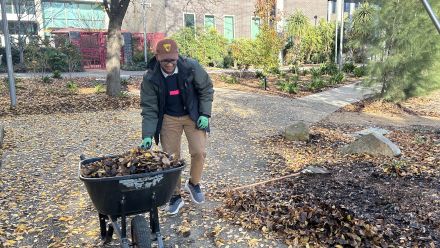Power disconnections put First Nations people at risk
In some remote Northern Territory communities nearly all households, 91 per cent, experienced a disconnection from electricity during the 2018-19 financial year, according to a new study led by The Australian National University (ANU).
The researchers warn that pre-paid power arrangements are putting already disadvantaged Australians at risk, particularly as they lose power on dangerously hot days.
The data, taken from smart meters for 3,300 households in 28 remote Indigenous communities, shows almost three quarters of households, 74 per cent, using prepaid electricity meters had their household power disconnected more than 10 times.
The report authors suggest the figures are an "underestimate" as there are many more households using prepayment metering than those represented in the study.
"Remote Indigenous communities suffer severe energy insecurity, which worsens during extreme temperatures. These households are more likely to experience disconnection from electricity on very hot or very cold days," report author Dr Thomas Longden, from ANU, said.
"The impact is greatest in the central dry grassland climate zone, which is located in central Australia and experiences both cold nights during winter and hot days during summer. These temperature-related disconnections are driven by an increase in electricity used to heat and cool homes.
"Remote communities are not covered by the policy protections that the vast majority of Australians enjoy."
The study, published in Nature Energy, shows households with high electricity use located in the central climate zones of Australia had a one-in-three chance of a same-day disconnection on very hot or very cold days.
"With prepayment, once credit runs out this disconnects the whole household from electricity supply, which can compromise the functioning of the home. We found that almost all households faced disconnection and the rates of disconnection are higher during either extreme temperatures," Dr Longden said.
Co-author Dr Simon Quilty, an ANU researcher based in central Australia, said the power cuts are "punishing Indigenous communities" as they face climate change and a global pandemic.
"Energy poverty amplifies poor health in remote communities, and this runs hand-in-hand with very poor quality housing," Dr Quilty said.
"In extreme weather, these houses regularly become dangerously hot. On an extremely hot Northern Territory day, the electricity is more likely to go off. As the inside temperature rises, air conditioners don't work, food and medicines in fridges spoil, families can't do their washing, and people crowd into other houses where the power is still on.
"These communities are facing the failure of policy around the collision of climate change and energy regulation. It's dangerous for Indigenous communities."
The researchers suggest a broad suite of related policy responses is required to reduce the frequency, duration and negative effects of disconnection from electricity for remote-living Indigenous residents.
"This situation needs to change, and Indigenous communities need to be involved as the leaders of what these changes look like," Dr Quilty said.
Indigenous report co-author Norman Frank Jupurrurla, from Julalikari Council Aboriginal Corporation, said: "People are still living rough, houses are hot in summer with no insulation and burning like an oven, and in winter they are freezing like a fridge."


